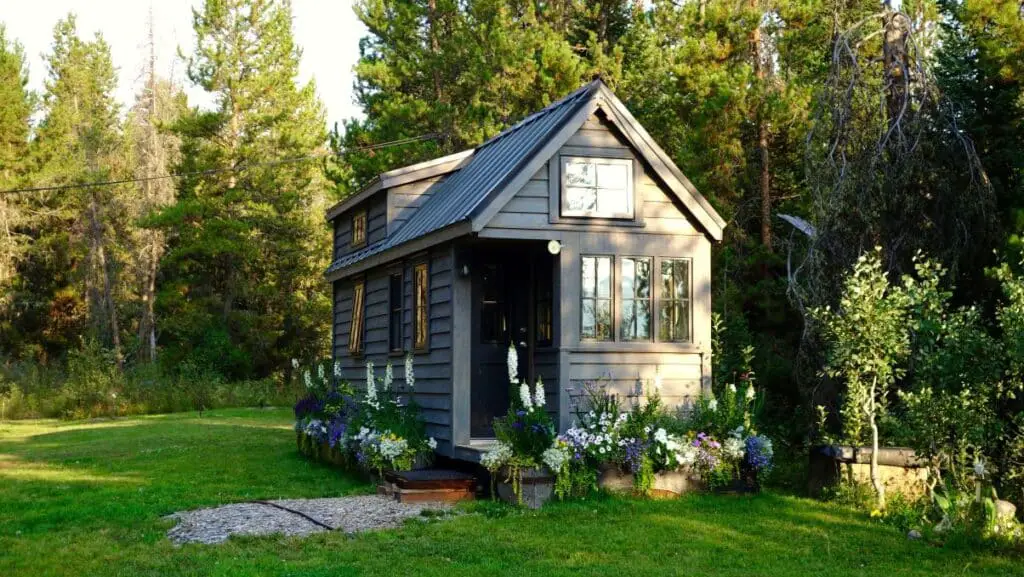Over the past years, more and more people have been drawn to the idea of living in tiny homes to simplify their lives or reduce their living expenses. While these tiny abodes may offer a range of benefits, including affordability and mobility, what about safety? How safe are tiny homes anyway?
Tiny homes can be safe to live in, but it largely depends on the construction and adherence to building codes and safety regulations. Structural integrity, fire safety, security, and the impact of severe weather events are key safety considerations for tiny houses.
In this article, we will explore the various safety considerations of tiny homes. We will also examine the security governing tiny houses to help readers better understand the safety measures in place to protect those who call these small spaces home.
Quick Navigation
- Importance of Safety In Tiny Homes
- Fire Safety
- Structural Safety
- Safety in Tiny Home Communities
- Security
- Environmental Safety
- Tiny Home Safety vs. Traditional Homes
- Conclusion
Importance of Safety In Tiny Homes
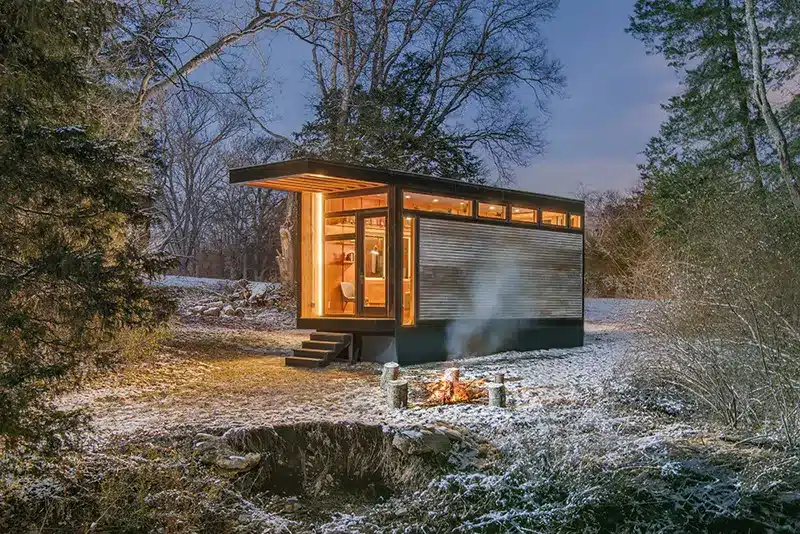
As the tiny house movement becomes popular, people naturally question the most crucial component- safety.
Because of their small size, tiny homes are more vulnerable to damage from natural disasters like earthquakes or high winds.
As a result, it’s crucial to know first if the house was built according to local or international building norms and laws and is structurally solid. Fire is yet another crucial safety factor for tiny home safety.
Fires in compact homes may spread fast and result in substantial damage because of their small size.
To reduce the chance of a fire, a tiny house owner must properly install detectors and fire extinguishers. A small house’s location might affect its safety and structural integrity.
Zoning rules and land-use restrictions could limit where you can build a tiny home, so people who live in them must ensure they have access to necessities like power and water. There are worst states for tiny homes where strict zoning regulations and high land costs can significantly affect your tiny home living.
People may guarantee their tiny home is safe and pleasant by taking the appropriate measures and adhering to building laws and regulations.
Fire Safety
As mentioned earlier, fire safety is a critical consideration for anyone residing in a tiny home. Due to their small size and compact design, tiny houses can be particularly susceptible to fires.
Fires in tiny houses can be hazardous due to the small living space, often constructed using highly flammable materials, and limited exits.
In addition, the proximity of other tiny houses and the potential for lack of nearby emergency services can create additional dangers in case of a fire.
Risk of fire in tiny homes
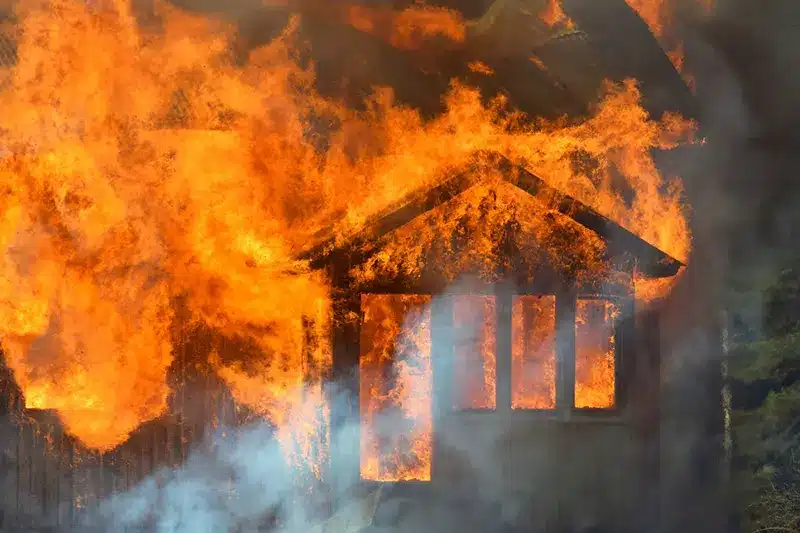
Fire risk is one of the most significant safety concerns in tiny homes. Due to their small size and often off-grid locations, fires in tiny houses can be hazardous. Several variables influence the danger of fire in tiny homes.
First, many little buildings are made of combustible materials like wood, quickly catching fire and spreading.
Also, while tiny homes are often made to utilize less energy, they may need more ventilation and be tightly enclosed. This might result in a buildup of heat and humidity, making a fire more likely.
Also, because compact homes sometimes need more room, storing combustible items like gasoline, cleaning supplies, or cooking oils may be difficult.
If not appropriately utilized, cooking equipment and heating sources like wood stoves or propane heaters may provide a fire danger.
Although flames may quickly move from one small home to another, the closeness of other tiny houses in tiny house communities can raise the danger of a fire.
Preventive methods, including utilizing non-flammable materials in construction, ensuring enough ventilation, and securely storing combustible objects, are crucial to lowering fire danger in compact homes.
Operating heating and cooking equipment carefully and correctly is vital, and the compact house must include functional smoke alarms and fire extinguishers.
Also, those who live in tiny homes should have a plan in place in case of an emergency and be informed of the location of the closest fire station and emergency services.
Fire prevention tips for tiny homes
Taking proactive fire prevention measures is essential to minimize the fire risk in tiny houses. Some critical fire prevention tips for tiny houses include:
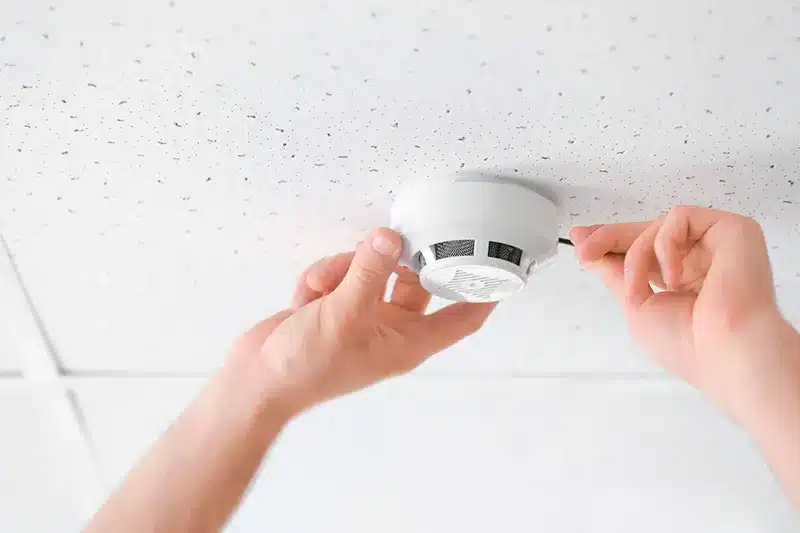
Proper installation of smoke detectors: Smoke detectors are essential for early warning in a fire. It should be installed in each sleeping area and level of the tiny home.
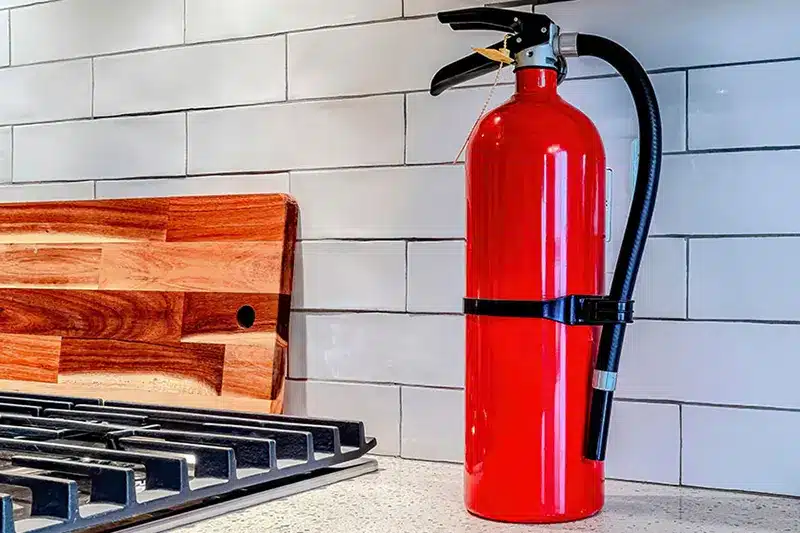
Fire extinguishers: Fire extinguishers can help to contain small fires before they spread quickly. Each tiny house should have at least one fire extinguisher that is easily accessible and properly maintained.
Proper electrical connections: Faulty wiring can cause fires in tiny homes. A licensed professional should complete all electrical work, and all wiring should be regularly inspected and maintained.
Careful use of heating and cooking appliances: Use alternative heating and cooking techniques with care, such as gas or wood-burning stoves, by following the manufacturer’s instructions. These appliances need to be periodically serviced and adequately ventilated.
Clear escape routes: Identification and maintenance of obvious escape routes are crucial in the case of a fire. This may involve identifying an emergency exit point, keeping fire extinguishers readily available, and practicing fire drills.
Importance of smoke detectors and fire extinguishers
Smoke detectors and fire extinguishers are critical for fire safety in tiny houses. They provide early warning of a fire, giving occupants more time to escape. Fire extinguishers can be used to contain small fires before they spread quickly.
It is essential to properly install and maintain smoke detectors and fire extinguishers in a tiny home.
Detectors should be tested regularly and have their batteries changed at least once a year. Fire extinguishers should be regularly inspected and replaced if they expire or show signs of damage.
In conclusion, fire safety is critical for anyone residing in a tiny house.
Tiny homeowners may help reduce the danger of fire and create a secure and pleasant living environment by implementing proactive fire protection measures, such as installing and maintaining smoke detectors and fire extinguishers.
Structural Safety
The primary focus should always be safe while living in a compact house. Structural safety is paramount, given these homes’ compact and unique design.
The structural safety of tiny houses is crucial for ensuring the safety of those living in them. Due to their small size and unique design, tiny houses require special attention regarding construction and safety measures.
One important aspect of structural safety in tiny homes is the quality of construction materials.
Quality of materials used in building tiny homes
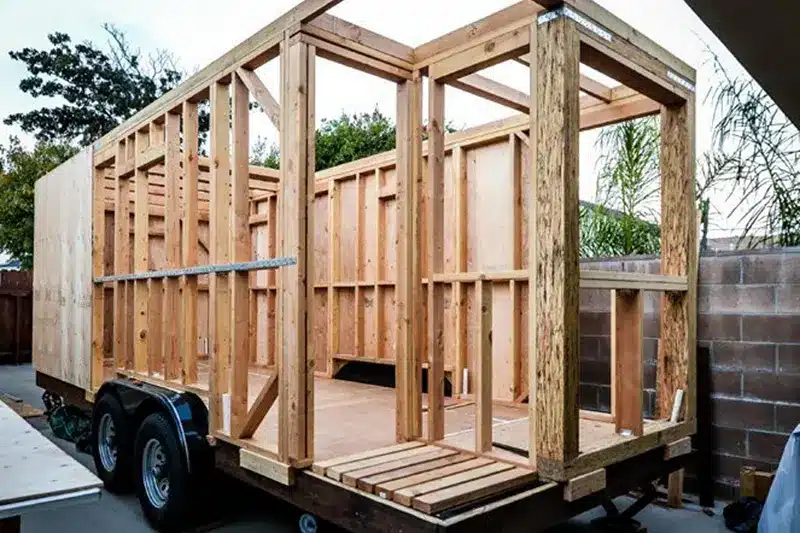
A key element in assuring the safety and long-term viability of the project is the caliber of the materials utilized to construct small dwellings. Small and compact homes must be constructed from sturdy and long-lasting materials.
When selecting materials for a small house, weight is among the most crucial considerations.
Using lightweight but sturdy materials, such as heavy-duty steel or lightweight composites, is crucial as tiny dwellings are often transportable or need a small footprint.
This makes it possible to maintain the tiny house’s structural integrity when moving or transporting it.
The usage of sustainable and eco-friendly products is an additional crucial factor.
To lessen their influence on the environment, many tiny home builders prioritize using eco-friendly materials like bamboo, salvaged wood, or recycled materials.
The safety and health of persons living in a tiny house are aided by these materials being often non-toxic and chemical-free.
Considering the materials’ strength and durability while constructing a compact house is also crucial. Solid and long-lasting materials that are also lightweight, such as structural insulated panels (SIPs), aluminum frames, and premium timber, are often good choices.
Last but not least, confirming that the materials used to construct a small home adhere to building codes and safety requirements is essential.
Builders should utilize materials that have undergone safety testing and certification, such as those that have a fire-resistance rating or satisfy the structural requirements of building regulations.
Importance of proper construction techniques
Proper construction techniques are also critical to the structural safety of a tiny home. It is essential to work with experienced and skilled builders familiar with tiny house construction’s unique challenges and requirements.
They should follow local or international building codes and regulations and employ proper techniques when framing, roofing, and installing utilities.
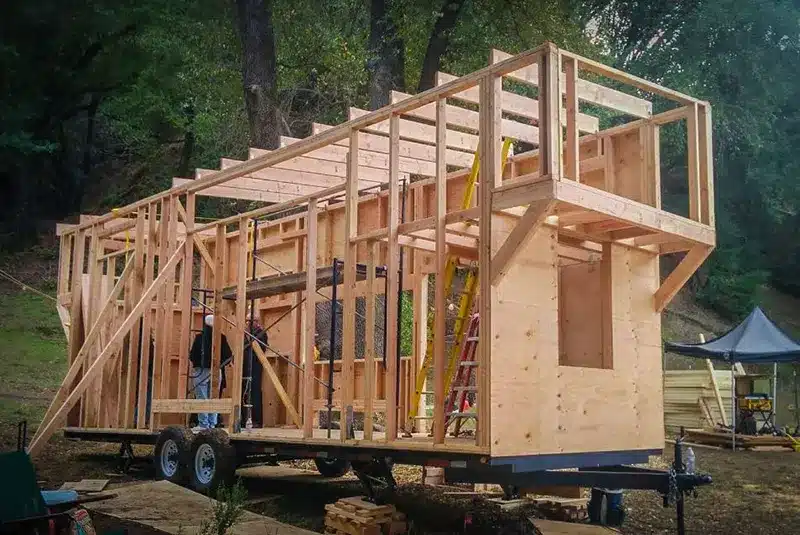
Safety concerns regarding weight distribution and stability
Weight distribution and stability are important considerations regarding the structural safety of tiny homes. Due to their small space, tiny houses are particularly susceptible to weight imbalances, which can lead to structural failure or tipping.
It’s crucial to ensure the house’s weight is distributed evenly and securely fasten it to a foundation or trailer. Moreover, tiny homes’ design should provide appropriate stability and support.
Stabilizing jacks, reinforced framing or other structural supports could be used in this. Extreme weather conditions, such as strong winds or heavy snowfall, must also be considered while designing the residence.
Structural safety is vital for anyone building or living in a tiny home.
By using high-quality materials, employing proper construction techniques, and addressing safety concerns regarding weight distribution and stability, tiny homes can provide a safe and comfortable living environment for their occupants.
Safety in Tiny Home Communities
Tiny home communities are becoming increasingly popular for people to downsize and simplify their lives. While living in a community can be a rewarding experience, it is crucial to prioritize safety.
Safety concerns in tiny home communities
Fire safety, burglary prevention, and disaster readiness are potential safety problems in small home communities.
Local authorities and communities must collaborate to solve these issues and provide a secure living environment. The possibility of fire is one typical safety worry in neighborhoods with tiny houses.
Little dwellings are particularly vulnerable to flames because of their compact size and proximity to other residences.
Fire safety precautions should be in place, including smoke detectors, fire extinguishers, and a community fire safety plan. Each community should be concerned about crime prevention.
To prevent crime and keep occupants and the tiny home safe, it is crucial to have enough lighting, strong locks, and a neighborhood watch program.
Having strategies for medical crises, natural disasters, and other unforeseen occurrences is essential for emergency preparedness.
Importance of community regulations and inspections
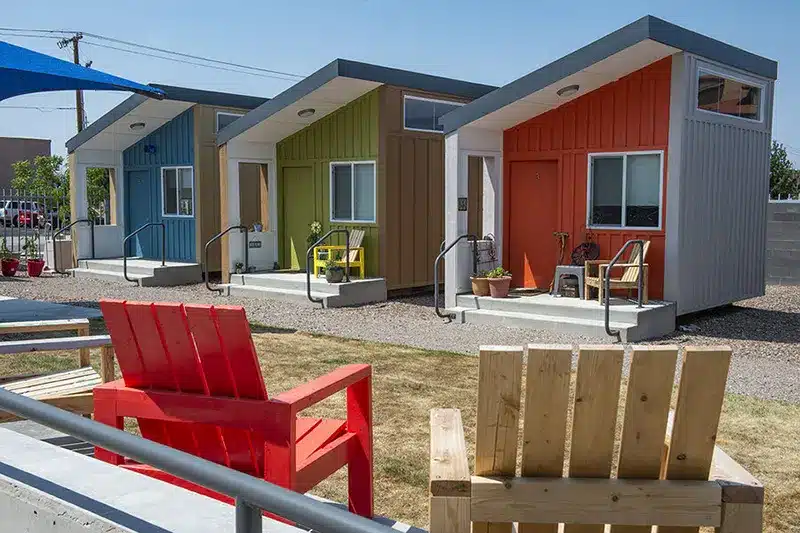
Community regulations and inspections can play a key role in ensuring safety in tiny house communities.
Building codes and zoning regulations can help ensure that tiny houses built are in proper safety building standards, while inspections can identify any safety hazards or code violations.
Community leaders can also establish safety guidelines and rules for residents, such as outdoor fires or smoking restrictions.
By enforcing these regulations and conducting regular inspections, the community can maintain a safe and healthy living environment for all residents.
Safety tips for living in a tiny home community
In addition to community regulations and inspections, residents can follow several safety tips to help ensure their own safety. These include:
- Always keep your home locked and secure.
- Install smoke detectors and fire extinguishers in your home.
- Know your neighbors.
- Report any safety hazards or concerns to community leaders.
- Prepare for emergencies by keeping a first aid kit and supplies on hand.
- Regularly inspect and maintain tiny house plumbing and electrical system for proper monitoring.
By addressing safety concerns, following community regulations and inspections, and practicing safety tips, residents can enjoy a safe and fulfilling living experience.
Security
Residing in a tiny house comes with certain security risks.
Risk of burglary and theft in tiny homes
Each person who lives in a house, particularly those who reside in small dwellings, should be concerned about the possibility of theft and burglary.
Since they are smaller and have fewer security systems, tiny homes may be more prone to theft and robbery.
Tiny houses are often parked or situated in more secluded regions, which is one of the primary reasons they may be more prone to theft.
This may make them more appealing targets for thieves, mainly if they know the tiny house owners will only be home temporarily. The absence of home security systems is another element that raises the danger of theft in compact residences.
The same degree of security elements found in larger homes, such as alarm systems, security cameras, and motion sensors, are often absent from many tiny houses. This may make it simpler for robbers to break in and take priceless items.
Tiny homeowners may take several precautions to reduce the likelihood of theft and robbery. Installing home security components like locks, deadbolts, and security cameras is one practical option. This may serve as a deterrent to criminals and as proof of a break-in.
Also, it’s critical to remain conscious of your surroundings and watch for any unusual behavior. Being a part of a tiny house community may also offer an extra layer of protection since residents can keep an eye on one another and report any suspicious conduct to the police.
Security features in tiny homes
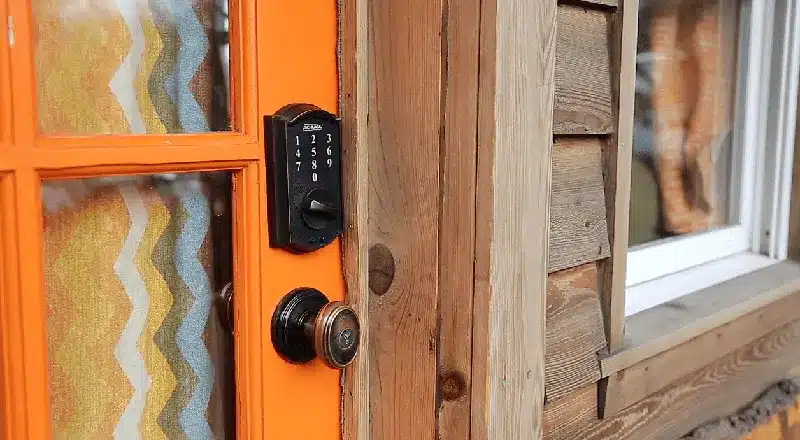
Security is essential for tiny house dwellers, as these homes can be more vulnerable to theft and burglary due to their small size and portability. Here is an important feature that can be incorporated to help ensure tiny house safety:
- Sturdy doors and locks: Tiny house doors should be made of sturdy materials, such as metal or solid wood, and equipped with high-quality locks. Deadbolts and padlocks can provide additional security.
- Security cameras: Installing security cameras inside and outside the tiny home can help deter burglars and provide evidence in the event of a break-in.
- Motion sensors: Motion sensors can be installed to detect any movement inside or outside the tiny home, triggering an alarm or alerting the occupants.
- Window locks and alarms: Windows are a common entry point for burglars, so installing locks and alarms on windows can help prevent break-ins.
- Outdoor lighting: Adequate outdoor lighting can help deter burglars and make it easier for occupants to see potential threats.
- Neighborhood watch program: Joining or forming a neighborhood watch program can provide security for tiny house communities.
Overall, incorporating these security features into tiny houses can help provide peace of mind for the occupants and help prevent theft and burglary.
Importance of community watch programs
Neighborhood watch programs may be beneficial in maintaining the safety of small-house communities.
People may cooperate in watching out for unusual conduct and notify local authorities of possible security issues. It’s critical to build strong ties with your neighbors in addition to community watch programs.
You can create strong bonds within your neighborhood and make it safer to live by getting to know and watching out for one another. Anybody living in a little house should give security a lot of thought.
You may lessen the danger of burglary and theft by installing security equipment in your house, being watchful, and participating in neighborhood watch programs.
Environmental Safety
Living in a compact home may provide a more straightforward and environmentally friendly way of living, but it also raises special environmental safety issues.
The danger of exposure to mold, chemicals, and other environmental hazards in tiny homes will be covered in this section, along with methods for reducing environmental hazards and the significance of proper ventilation and air monitoring.
Risk of exposure to mold, chemicals, and other environmental hazards
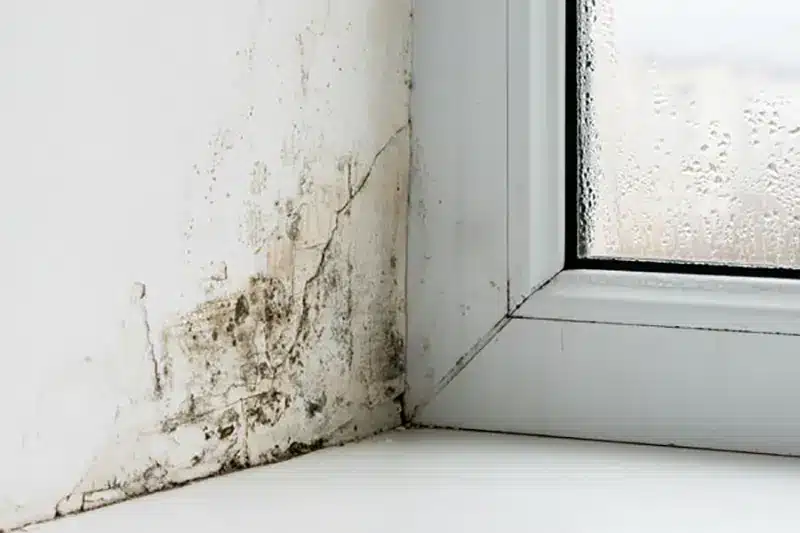
Due to their small size and sometimes off-grid settings, tiny houses may be more likely to be exposed to mold, toxins, and other environmental risks.
A buildup of moisture brought on by poor ventilation may encourage mold development and other hazardous organisms.
Also, many tiny homes are built with materials that could include chemicals like formaldehyde, which can harm your health if exposed for a long time.
Strategies for preventing environmental hazards in tiny homes
Like any other dwelling, tiny houses may be vulnerable to environmental risks, including mildew, indoor air pollution, and hazardous chemicals.
Yet, several tactics may be used to stop these risks from happening and guarantee the security of people who live in compact homes.
Using certain building materials and furnishings is one of the most important measures for reducing environmental dangers. This entails selecting materials and goods devoid of hazardous substances like formaldehyde and volatile organic compounds (VOCs).
These substances are present in things like paint, flooring, and furniture. Using natural, non-toxic materials like bamboo, cork, and natural fibers may reduce indoor air pollution.
Another strategy for preventing environmental hazards in tiny houses is to ensure good ventilation. Tiny houses can be prone to poor ventilation, leading to moisture and mold buildup.
Installing a ventilation system or using fans and opening windows can help to improve fresh air circulation and prevent mold growth.
Maintaining a clean living environment is also crucial for preventing environmental hazards. The collection of dust and other particles that might lead to poor indoor air quality can be reduced by routine cleaning and dusting.
Mold development may also be avoided by using a dehumidifier or drying out damp goods to keep moisture levels low.
Importance of proper ventilation and air quality monitoring
Good ventilation is essential for maintaining good air quality in your tiny home. This may be done by using fans and vents, as well as making sure there is enough airflow by leaving windows and doors open.
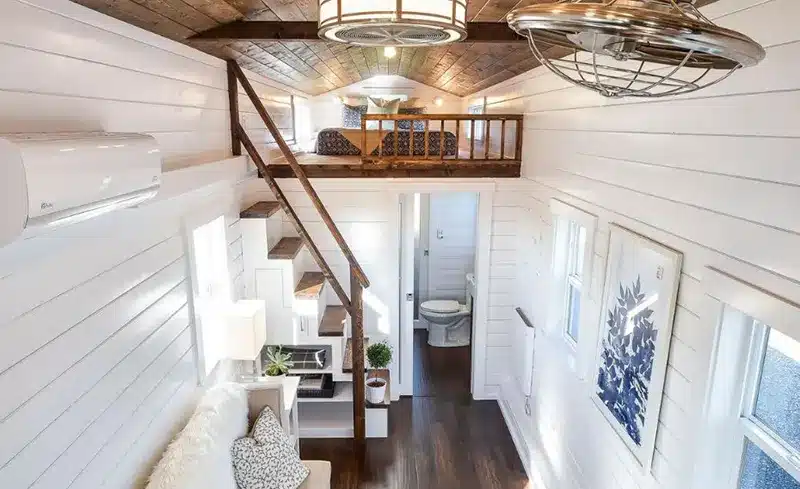
Monitoring air quality may be helpful in spotting possible environmental risks. You may check the quality of the air in your small house using one of the many reasonably priced and user-friendly air quality monitors that are on the market today.
In conclusion, it’s important to be knowledgeable about the possible environmental risks associated with living in a compact home and to take precautions to avoid them.
You can make your tiny house safe and healthy to live in by utilizing high-quality materials, making sure there is excellent ventilation, and keeping an eye on the air quality.
Tiny Home Safety vs. Traditional Homes
| Aspect of Safety | Tiny House | Traditional House |
| Fire Safety | Typically smaller and more compact, which could increase the risk of fire spreading quickly. | Typically larger and more spread out, which could increase risk of a fire starting in different areas. Easier to install fire suppression systems. |
| Weather Safety | Depending on the materials used, tiny houses may be less resilient to extreme weather events, such as hurricanes or tornadoes. | Typically built to withstand extreme weather events, and have more space for occupants to take shelter during a storm. |
| Structural Safety | May be more prone to shifting or settling due to mobility (if built on a trailer), or due to using lightweight materials. | Typically built with stronger, more durable materials, but may still be subject to settling or structural issues over time. |
| Security | Limited space and lack of privacy could make it easier for intruders to enter a tiny house. | Larger size and increased privacy could make it more difficult for intruders to enter a traditional house. Easier to install security systems. |
| Accessibility | Depending on the design and layout, tiny houses may be less accessible to people with mobility issues or disabilities. | Typically have more space and may be more easily modified for accessibility. |
| Environmental Safety | Tiny houses may have a smaller environmental footprint than traditional houses due to their smaller size. | Traditional houses may have a larger environmental footprint due to their larger size and potential use of less sustainable materials. |
You might also be interested to learn about how long does it take to sell a tiny home.
Conclusion
In conclusion, while tiny houses offer many benefits, such as affordability and minimalism, safety is a crucial aspect that must be considered.
We have discussed several safety concerns of residing in a tiny home, including structural safety, security, and environmental safety.
Taking precautions such as using high-quality materials for construction, ensuring proper weight distribution and stability, implementing security features, and being mindful of environmental hazards can significantly improve the safety of tiny houses.
It is essential to be proactive and stay informed about safety measures to ensure a comfortable living environment in your tiny home.

